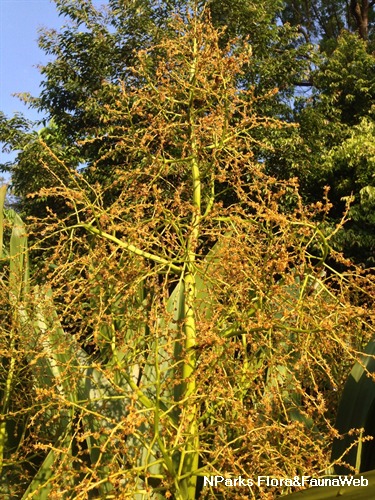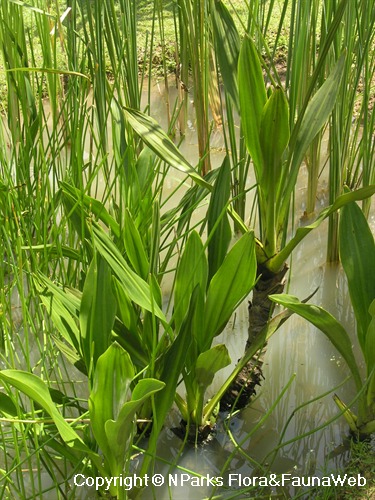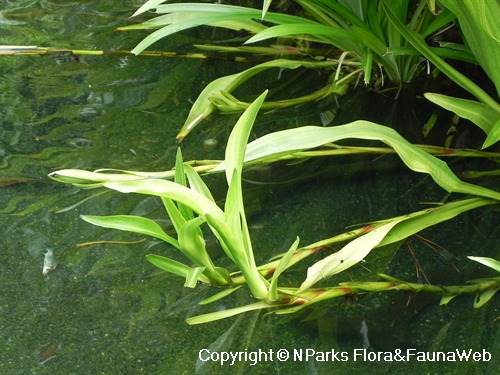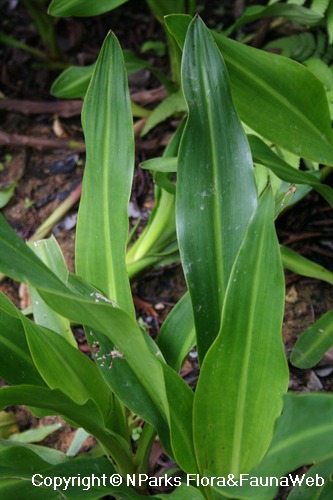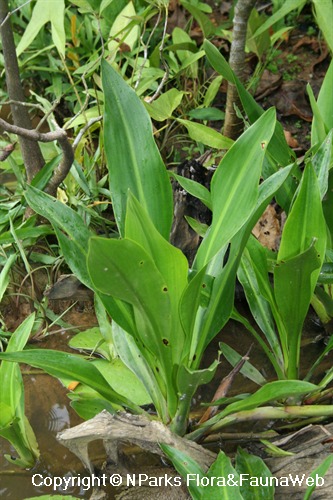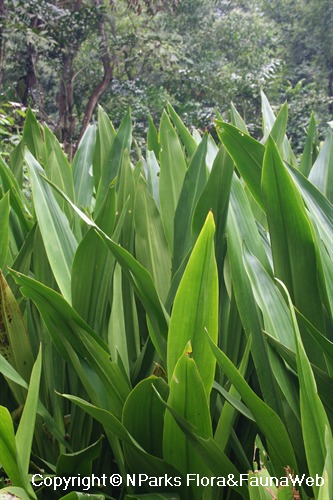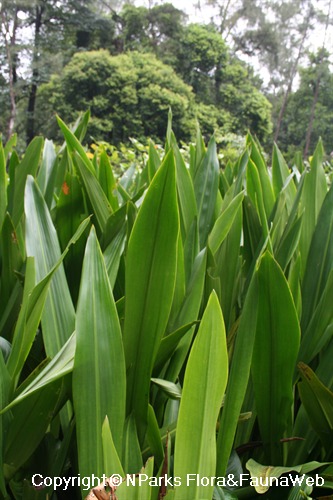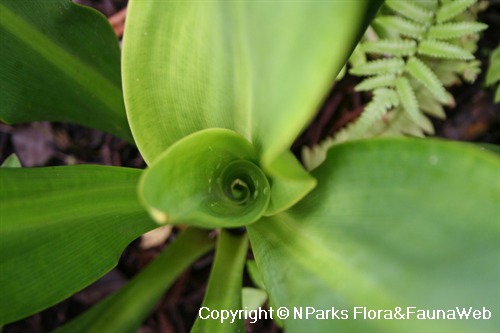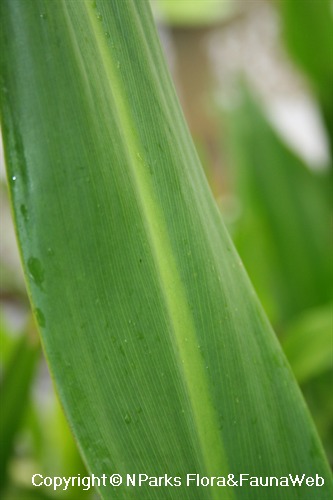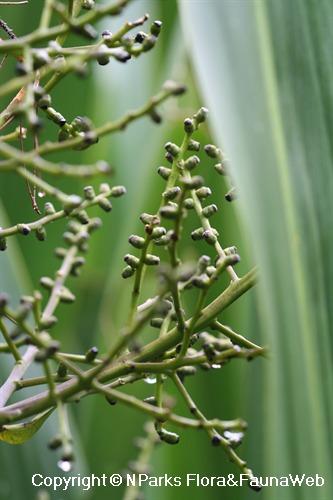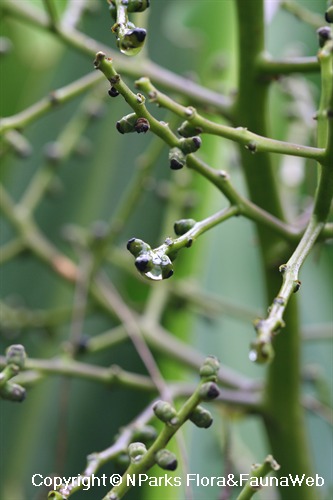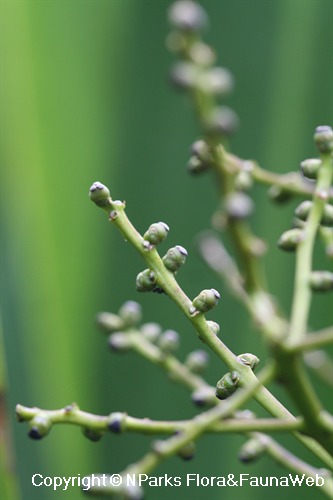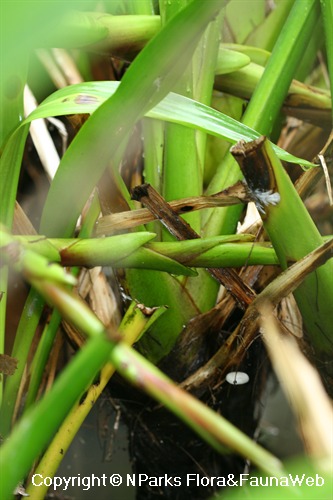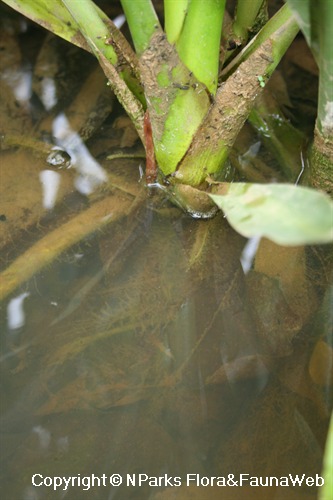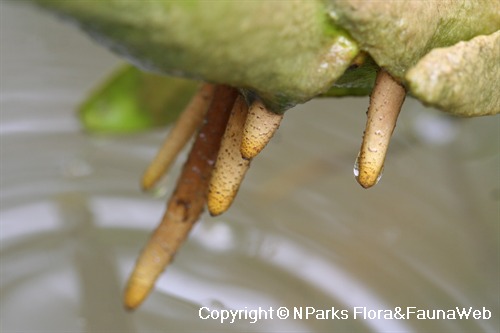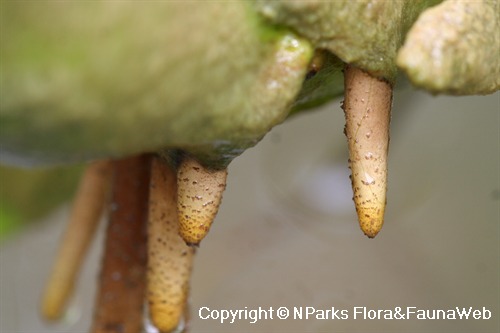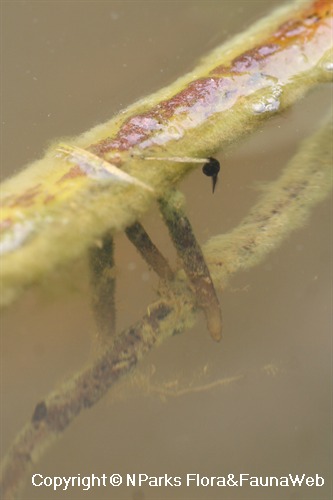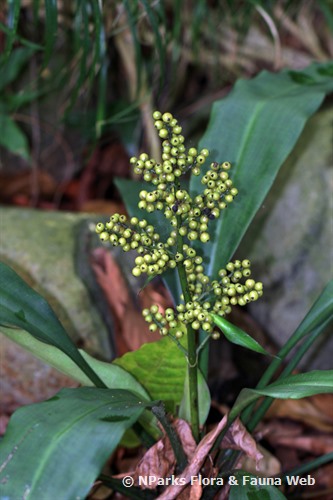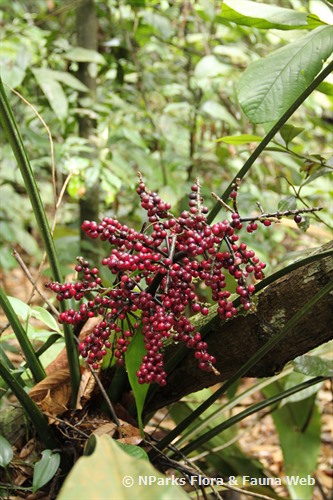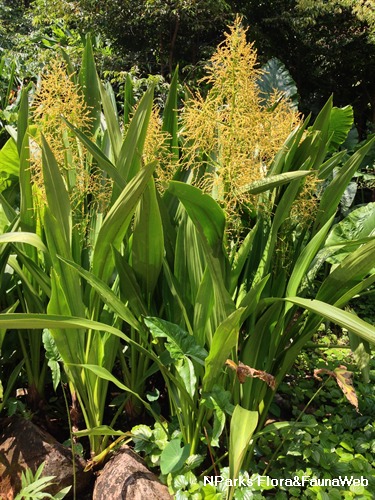
Back
Hanguana anthelminthica (Blume ex Schult. & Schult.f.) Masam.
| Family Name: | Hanguanaceae |
| Common Name: | Common Susum, Bakong Rimba |
Name
Classifications and Characteristics
| Plant Division | Angiosperms (Flowering Seed Plants) (Monocotyledon) |
|---|---|
| Plant Growth Form | Herbaceous Plant, Creeper |
| Lifespan (in Singapore) | Perennial |
| Mode of Nutrition | Autotrophic |
| Maximum Height | 3 m |
Biogeography
| Native Distribution | Sri Lanka, Southeast Asia and Palau |
|---|---|
| Native Habitat | Terrestrial (Freshwater Swamp Forest, Riverine), Aquatic (Freshwater Pond / Lake / River) |
| Preferred Climate Zone | Tropical |
| Local Conservation Status | Non-native |
Description and Ethnobotany
| Growth Form | It is an aquatic or terrestrial, perennial herbaceous plant up to 3 m tall. |
|---|---|
| Foliage | Its grass-like, fleshy, stalked leaves have leaf blades that taper at both ends. Its leaf blades are also sometimes purple or red on the underside, and 20–127 by 1.5–17.5 cm, with dense venation. |
| Flowers | Its green or yellow flowers grow on a branched flowering shoot. |
| Fruit | Its round fruits ripen from shiny red and dark purple to black, are up to 2.5 cm wide and contain one seed. |
| Habitat | It grows as an aquatic or terrestrial plant in lowland swamp forest, and hill forest up to 1,500 m altitude. It also grows in morasses, slow-moving freshwater, and along lake-shores and rivers, or humid forests. |
| Associated Fauna | It is an important habitat for waterfowl such as the common moorhen, purple swamphens, as well as habitats for aquatic insects and fish at their dangling roots, and provides perches for dragonflies. |
| Taxonomy | Hanguana anthelminthica (Blume ex Schult. & Schult.f.) Masam. was previously misidentified as Hanguana malayana (Jack) Merr. (Leong-Škorničková, J. & Niissalo, M.A., 2017). |
| Cultivation | It can be propagated by seed and stolons. |
Landscaping Features
| Landscaping | It is able to form floating islands in lakes owing to air present in its numerous air-vessels. The plant is large and attractive and useful for landscaping water bodies. |
|---|---|
| Desirable Plant Features | Ornamental Flowers, Ornamental Foliage |
| Landscape Uses | Parks & Gardens, Riverine, Pond / Lake / River, Marsh / Bog |
Fauna, Pollination and Dispersal
| Pollination Method(s) | Biotic (Fauna) |
|---|---|
| Seed or Spore Dispersal | Biotic (Fauna) |
Plant Care and Propagation
| Light Preference | Semi-Shade, Full Sun |
|---|---|
| Water Preference | Moderate Water, Lots of Water |
| Plant Growth Rate | Fast |
| Rootzone Tolerance | Moist Soils, Waterlogged Soils (Does not Drain Site), Fertile Loamy Soils |
| Propagation Method | Seed, Stolon / Runner |
Foliar
| Foliage Retention | Evergreen |
|---|---|
| Mature Foliage Colour(s) | Green |
| Mature Foliage Texture(s) | Smooth |
| Foliar Type | Simple / Unifoliate |
| Foliar Arrangement Along Stem | Rosulate / Rosette |
| Foliar Attachment to Stem | Petiolate |
| Foliar Shape(s) | Non-Palm Foliage (Lanceolate) |
| Foliar Venation | Parallel |
| Foliar Margin | Entire |
| Foliar Apex - Tip | Acute |
| Foliar Base | Acute, Clasping |
Non - Foliar and Storage
| Stem Type & Modification | Herbaceous |
|---|---|
| Root Type | Underground |
| Specialised Storage Organ(s) |
Floral (Angiosperm)
| Flower & Plant Sexuality | Bisexual Flowers , Bisexual Flowers |
| Flower Colour(s) | Yellow / Golden, Green |
|---|
| Flower Grouping | Cluster / Inflorescence |
| Flower Location | Terminal |
| Flower Symmetry | Radial |
| Inflorescence Type | Thyrse, Panicle |
Fruit, Seed and Spore
| Mature Fruit Colour(s) | Red, Purple, Black |
|---|---|
| Fruit Classification | Simple Fruit |
| Fruit Type | Fleshy Fruit , Non-Accessory Fruit |
References
| References | Leong-Škorničková, J. & Niissalo, M.A. (2017). Identity and typification of Hanguana malayana and H. anthelminthica and notes on other early names in Hanguanaceae. Plant System Evol. 303: 1213-1223. |
|---|
Image Repository
Others
| Master ID | 764 |
|---|---|
| Species ID | 2059 |
| Flora Disclaimer | The information in this website has been compiled from reliable sources, such as reference works on medicinal plants. It is not a substitute for medical advice or treatment and NParks does not purport to provide any medical advice. Readers should always consult his/her physician before using or consuming a plant for medicinal purposes. |

